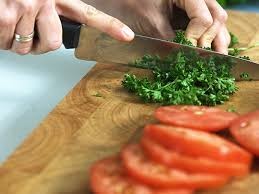Good kitchen practices that can protect knives from damage guide, Design Tips, Online Advice
Good kitchen practices to protect knives from being damaged
19 Apr 2021
Behind every good meal prepared at home, the unsung heroes are the kitchen knives which are the right hand of any cook or chef. No matter how good a recipe might be, proper sizing of the ingredients matters a lot in making food tasteful and presentable. Too large pieces might be uncomfortable to chew, and some pieces might remain undercooked, while too small pieces can spoil the appeal of the food by being a mismatch with the recipe. Although kitchen knives are pretty affordable, you must not take them for granted but instead care for them well to maintain their efficiency for a longer time.
Good kitchen practices that can protect knives from damage
Maintaining the sharpness of knives increases their safety, although many people believe that slightly dull knives are safer. Dull knives compromise your safety because applying more pressure during cutting raises the risk of losing control and might get hurt. On going through the reviews of Vertoku Knives, you will realize how much people depend on sharp knives.
Knives are delicate tools that need utmost care, and any negligence can render the tool useless and unsafe. Kitchen knives are prone to damage with the slightest rough handling and fragile tools that need proper care during handling and storage. It will ensure that your knives maintain their sharpness and rarely turn dull. When you care for your knife well, it will support you to prepare delicious meals, which is your biggest reward.
Proper use and maintenance of knives are easy, provided you know what to do and what to avoid when handling knives.
Use cutting boards for cutting
The knife’s sharpness can quickly become dull if it comes in continuous contact with hard surfaces, which can happen if you are careless in choosing the proper surface during cutting. When cutting, choose a surface that is not too hard for the blade and never use anything other than cutting boards. Never use the countertop for cutting because granite, marble, or stone can easily damage the knife edge.
Monitor the sharpness of the blade
While you can understand the level of blade sharpness during cutting by considering how easily and quickly you can complete the task, do some periodical tests by cutting a paper sheet to check the sharpness. Usually, sharpening knives twice a year ensures that it maintains the same level of sharpness throughout.
Wash knives with your hands
Although it might be tempting to throw your knives in the dishwasher, it will harm the knives because there are high chances that the washing cycle would make the knife blade dinged. Washing knives will prevent any damage and extend its life. However, be careful to wash the blades lightly to avoid injury.
Dry knives soon after washing
So not commit the mistake of leaving your knife in the dish rack after washing, hoping that it will dry naturally. Although it might dry after some time, it might encourage mold and mildew growth during the brief time when it remains moist.
Moreover, the knife might get dull when it shares space with other utensils if you leave it in the dish rack.
Comments on this guide to good kitchen practices to protect knives from damage article are welcome.
Kitchens
Kitchens Posts
The best kitchen appliances for healthy cooking
Kitchen appliances you should buy guide
Make Your New Kitchen Tech Savvy
Cutting Tools: Advantages of Carrying an EDC Folding Knife
Building
Architecture Articles
Comments / photos for the Good kitchen practices to protect knives from damage advice page welcome




